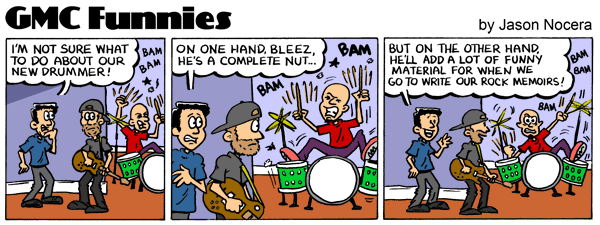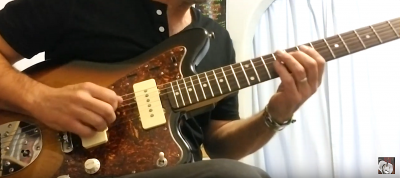How Do You Practice Your Scales |
|
|
|
|
|
| Feb 4 2013, 12:34 PM |
|
Maybe I'm lookng for too much in one go.
But practicing scales up and down pattern by pattern and even in intervallic sequences seems semi pointless, great for alt picking exercise, and muscle memory. I've seen some improvement in my playing via this method but what are some other ideas. Now My new pc is up and running I can practice over vamps, which might help lock in the harmony aspect into my ear. Taking two adjacent patterns and moving between them, would help break out of the 'stuck in one pattern' syndrome Help me create an efficient scale workout that not only helps lock the scales into my brain but helps my ears and musciality when playing -------------------- My SoundCloud
Gear Tyler Burning Water 2K Burny RLG90 with BK Emeralds Fender US Tele with BK Piledrivers Epiphone 335 with Suhr Thornbuckers PRS SE Custom 24-08 Ax8 Fessenden SD10 PSG Quilter TT15 |
|
|
||
|
|
|
|
| Feb 4 2013, 01:56 PM |
|
what's a 'vamp'?
--------------------  You say 'minor pentatonic ' like it's a bad thing |
|
|
||
|
|
|
|
| Feb 4 2013, 02:02 PM |
|
Just an accompaniment. So a one chord vamp would just be a continuous one chord rhythm
-------------------- My SoundCloud
Gear Tyler Burning Water 2K Burny RLG90 with BK Emeralds Fender US Tele with BK Piledrivers Epiphone 335 with Suhr Thornbuckers PRS SE Custom 24-08 Ax8 Fessenden SD10 PSG Quilter TT15 |
|
|
||
|
|
|
|
| Feb 4 2013, 03:54 PM |
|
No problem!
-------------------- |
|
|
||
|
|
|
|
| Feb 4 2013, 06:15 PM |
|
All the suggestions above are great and some are or all of those things are what is done by good musicians who play 'solos' and or technically demanding music.
But you've also sort of answered your own question ... practicing scales up and down pattern by pattern and even in intervallic sequences seems semi pointless, great for alt picking exercise, and muscle memory. *I've seen some improvement in my playing via this method* but what are some other ideas. In the area of technique, whether it be playing melodic material quickly or grabbing big, stretchy chord voicings - it's all about 'working out'. Practicing exercises and fundamentals. The process isn't always the most exciting but it's the reward you need to keep your eye on. That reward is 'can you pull off that super gnarly lick at any given moment in a live situation?' Making 'music' out of a scale or exercise is your job to do. A scale is a beautiful thing - when played as if it's music. A symphony wind or string player is amazingly passionate when they practice scales. Scales are what PART of music comes from. Record yourself practicing once a month - both playing exercises and jamming to a track. Don't listen to it. Archive it. Repeat process the next month (don't listen - archive). Do this for like 5 months. Then listen back starting with the first months recording. The 'timeline' results should be elucidating. This post has been edited by klasaine: Feb 4 2013, 06:18 PM -------------------- - Ken Lasaine
https://soundcloud.com/klasaine2/foolin-the-clouds https://soundcloud.com/klasaine2/surfin-at-the-country-hop Soundcloud assorted ... https://soundcloud.com/klasaine3 New record ... http://www.cdbaby.com/cd/kenlasaine Solo Guitar ... https://www.youtube.com/playlist?list=PLXZh...5iIdO2tpgtj25Ke Stuff I'm on ... https://www.youtube.com/playlist?list=PLXZh...b-dhb-4B0KgRY-d |
|
|
||
1 User(s) are reading this topic (1 Guests and 0 Anonymous Users)
0 Members:


























